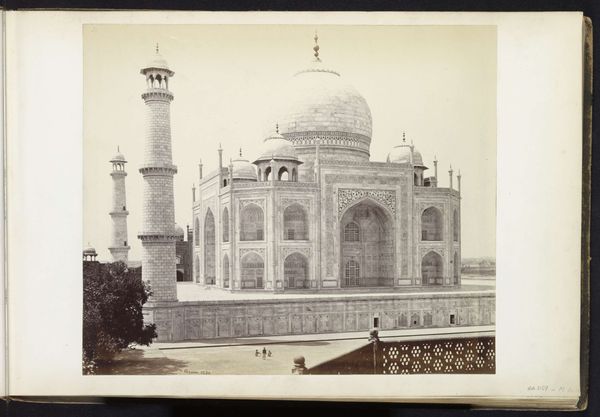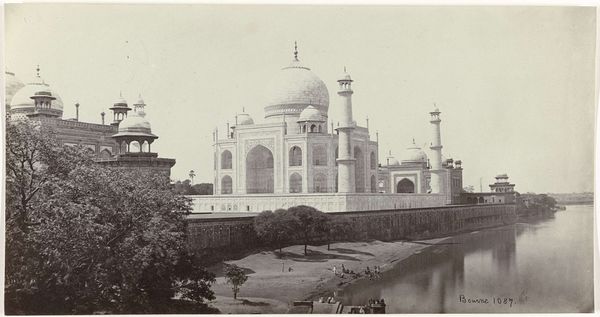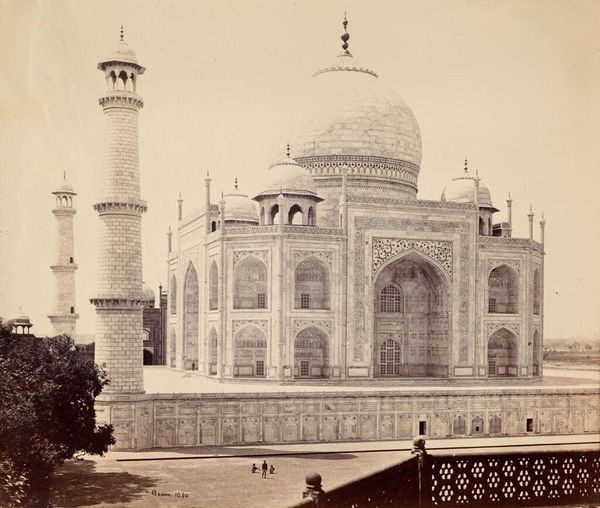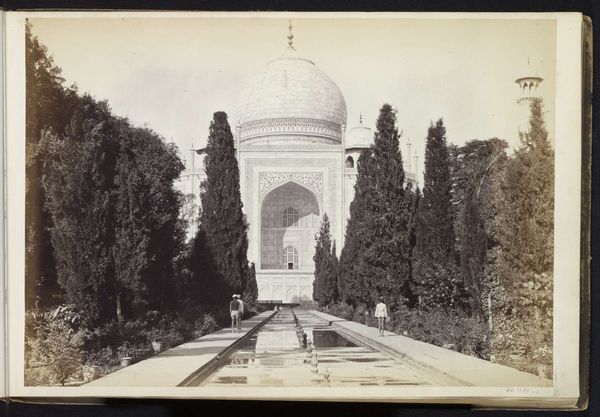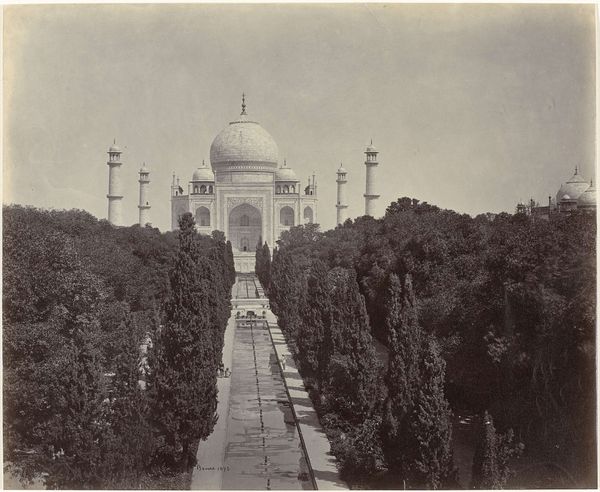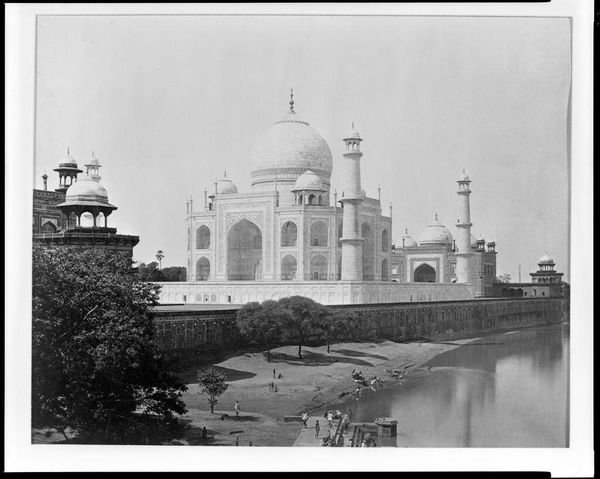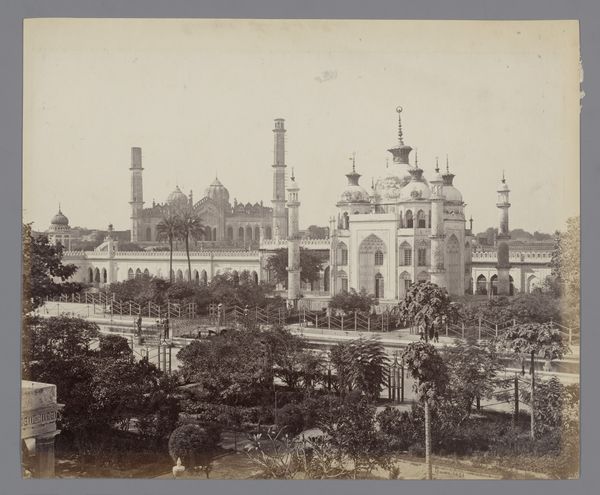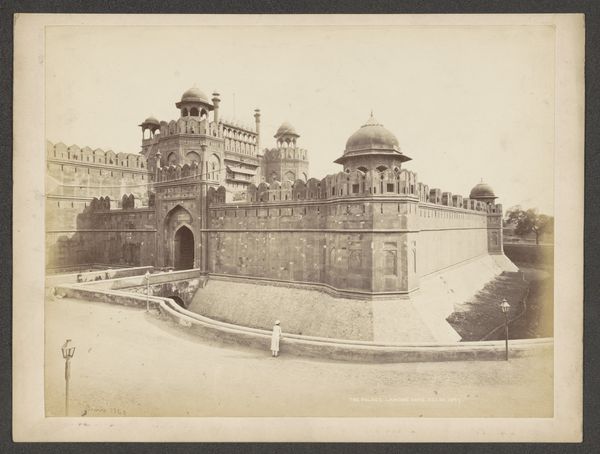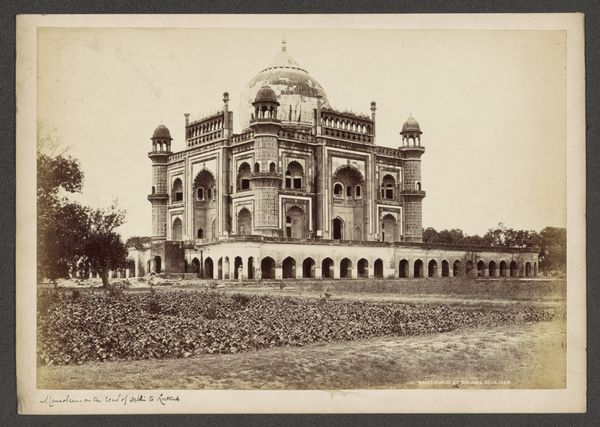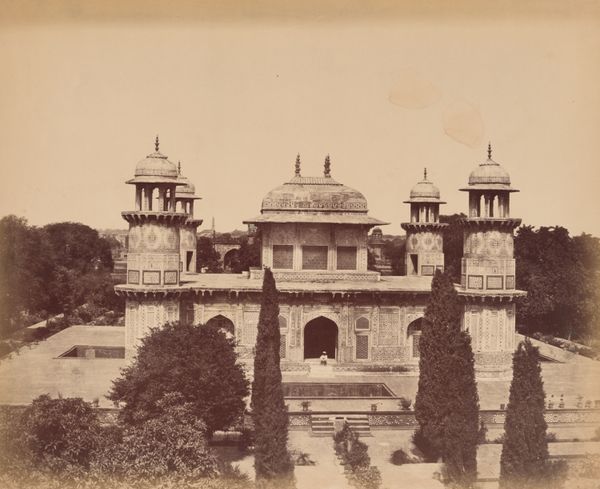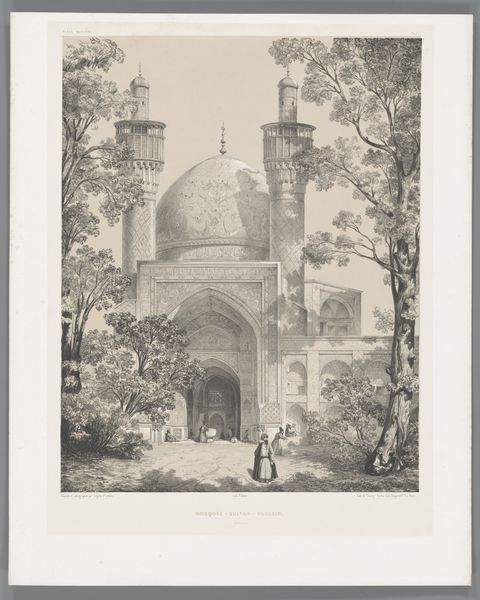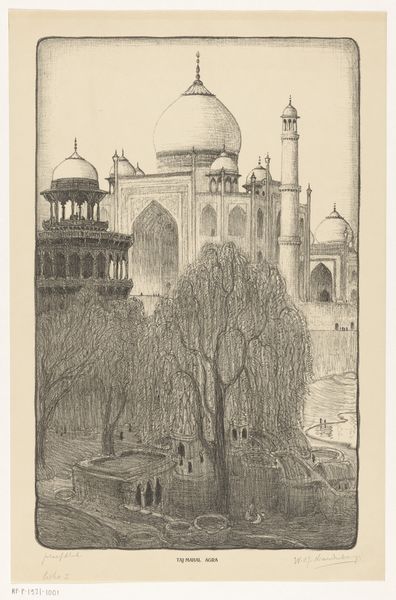
photography
#
landscape
#
photography
#
islamic-art
Dimensions: height 252 mm, width 355 mm
Copyright: Rijks Museum: Open Domain
Curator: Here we have "Gezicht op de Taj Mahal in Agra," a photograph dating from between 1862 and 1864, attributed to Shepherd & Robertson. Editor: The first impression is a scene shrouded in serenity, rendered in monochrome shades. There is a timeless stillness to this view, perhaps owing to the way the light filters through, almost uniformly, across the facade. Curator: Absolutely, but let’s consider the means of production here. Think of the technical expertise required to capture such detail with the photographic processes available in the mid-19th century. We see the work not just of the photographers, but also of the technicians involved in preparing the plates and chemicals. Their labor is integral to this image. Editor: Indeed. This photo presents an image of power and permanence, which reminds me of colonial documentation and its complicated politics of representation. Consider, what was the photographers' role, operating within the socio-political dynamics of British India? Were they attempting to simply portray beauty, or also reinforce ideas of order and control through capturing and circulating such imagery? Curator: Those are critical questions, and we should also be questioning what the consumption of images like these would do for British and other European audiences. Looking at it this way helps challenge any idea of this image representing a 'neutral' view, since there are economic and social elements behind both production and enjoyment. Editor: Furthermore, the romantic framing, emphasizing symmetry and serene landscape, also has an impact. These aesthetic decisions shape our understanding and consumption, directing us away from any narrative around the exploitation and disruption which often came as consequences of the colonial project in India. The composition itself functions ideologically. Curator: The very act of landscape photography became enmeshed in political, economic, and even ideological projects. Editor: It compels me to acknowledge that beauty and oppression are not mutually exclusive, they may coexist within the frame, and the artist, by focusing on one aspect, risks obscuring the reality. The gaze itself becomes an act we must inspect. Curator: Yes, it requires acknowledging a history within that apparent tranquility. Thank you for sharing your view on the picture's material circumstances, and potential ideological impacts. Editor: Of course! Let’s be mindful of the fact that any encounter we may have with this image needs a complex awareness of these past and contemporary tensions.
Comments
No comments
Be the first to comment and join the conversation on the ultimate creative platform.
